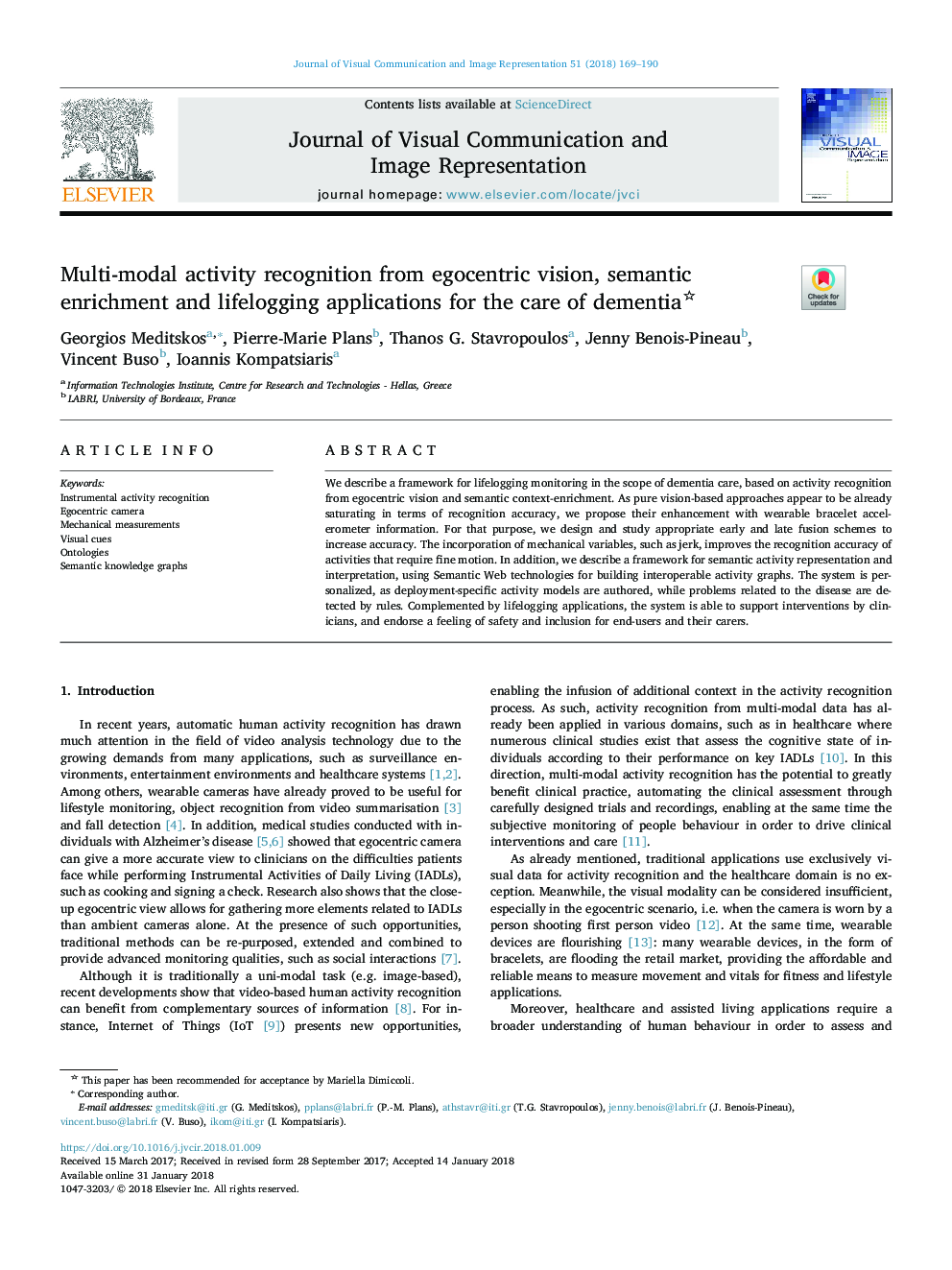| Article ID | Journal | Published Year | Pages | File Type |
|---|---|---|---|---|
| 6938338 | Journal of Visual Communication and Image Representation | 2018 | 22 Pages |
Abstract
We describe a framework for lifelogging monitoring in the scope of dementia care, based on activity recognition from egocentric vision and semantic context-enrichment. As pure vision-based approaches appear to be already saturating in terms of recognition accuracy, we propose their enhancement with wearable bracelet accelerometer information. For that purpose, we design and study appropriate early and late fusion schemes to increase accuracy. The incorporation of mechanical variables, such as jerk, improves the recognition accuracy of activities that require fine motion. In addition, we describe a framework for semantic activity representation and interpretation, using Semantic Web technologies for building interoperable activity graphs. The system is personalized, as deployment-specific activity models are authored, while problems related to the disease are detected by rules. Complemented by lifelogging applications, the system is able to support interventions by clinicians, and endorse a feeling of safety and inclusion for end-users and their carers.
Related Topics
Physical Sciences and Engineering
Computer Science
Computer Vision and Pattern Recognition
Authors
Georgios Meditskos, Pierre-Marie Plans, Thanos G. Stavropoulos, Jenny Benois-Pineau, Vincent Buso, Ioannis Kompatsiaris,
